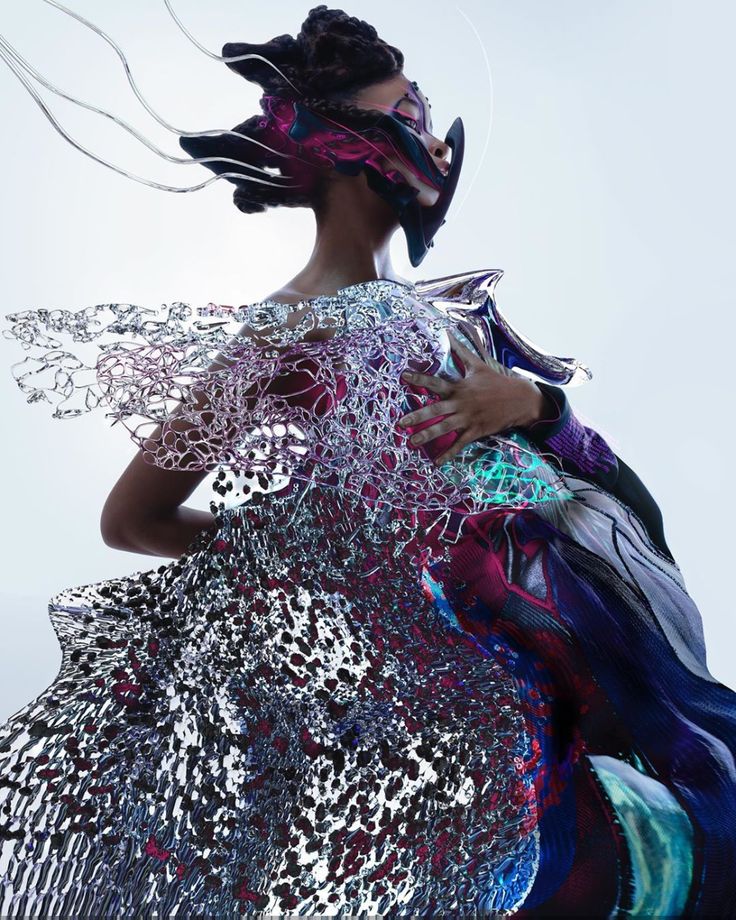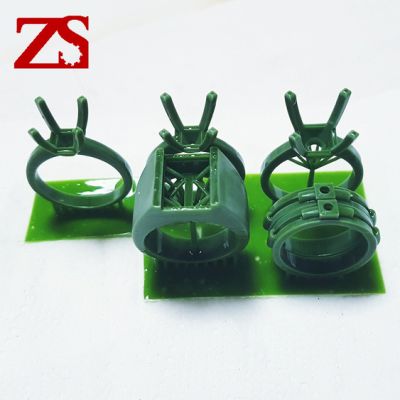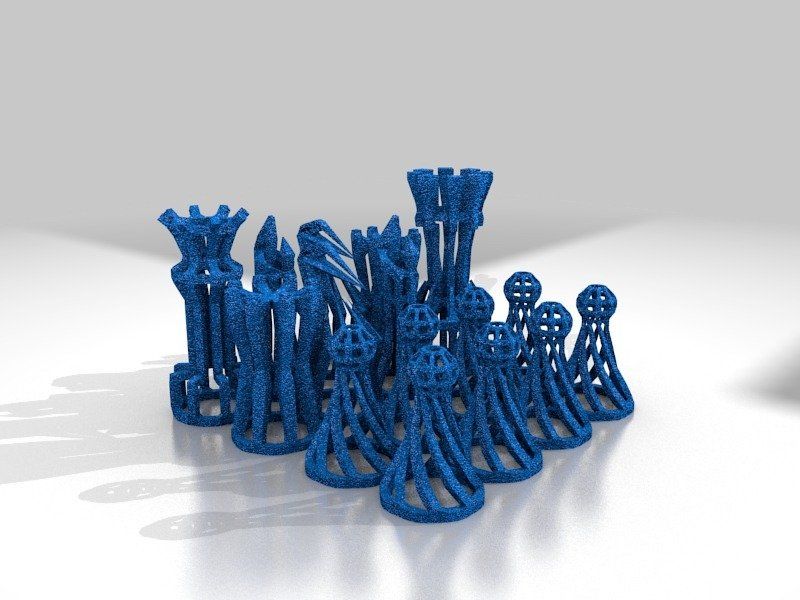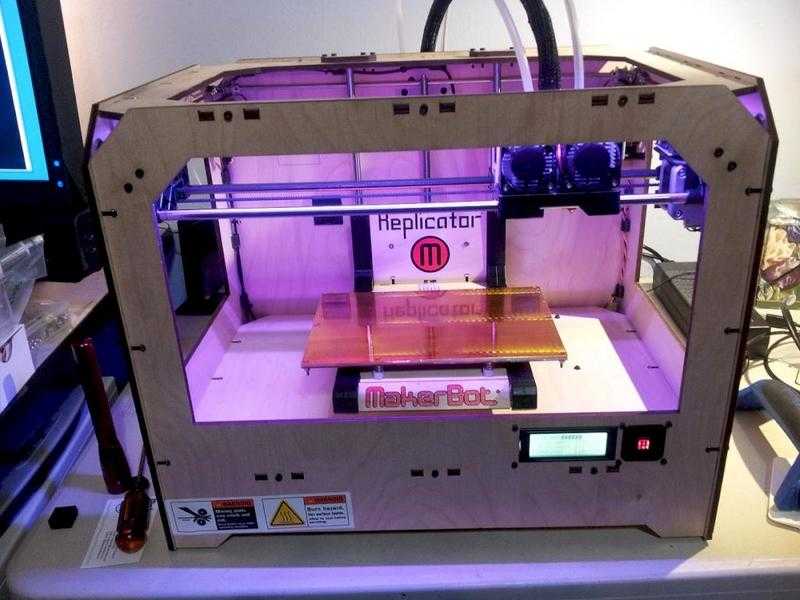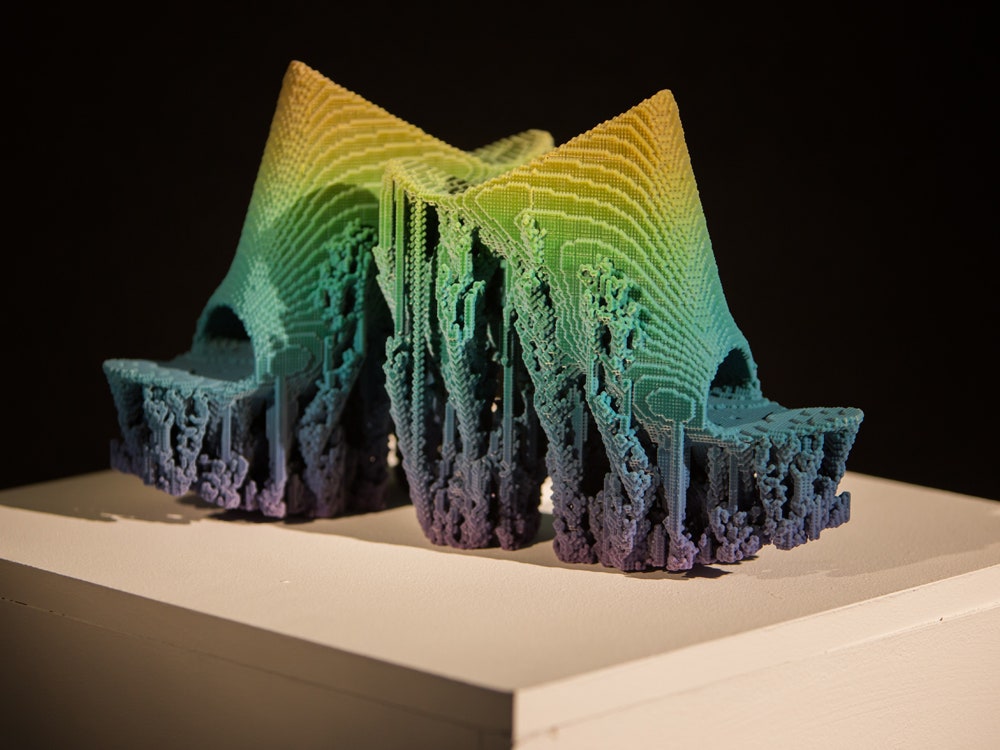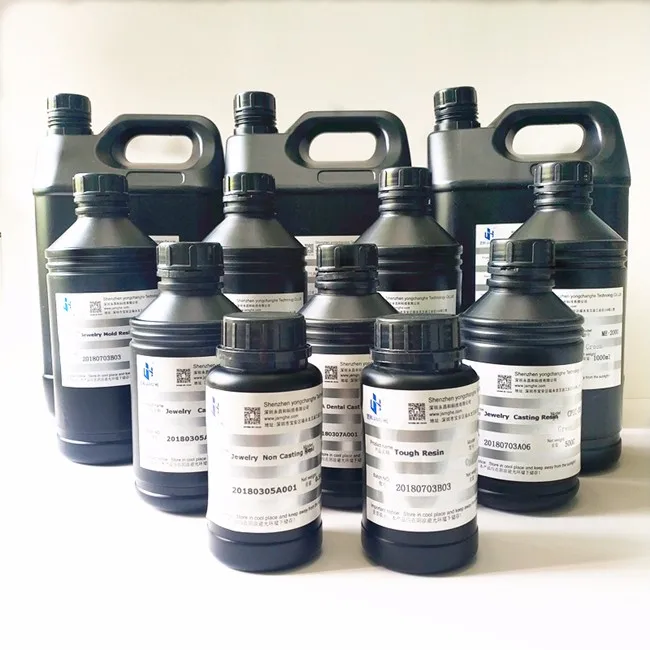3D printer fashion designer
3D Printed Fashion: The Top Designs
Published on August 4, 2022 by Alexandrea P.
Fashion brings together several industries, whether it is clothing, cosmetics, or luxury. All sorts of products are being created to embellish and affirm a style, a look, a way of being. In the world of fashion, it is necessary to know how to stand out and how to present ever more original and innovative designs. For that reason, many brands and designers are now turning to 3D technologies, which is understandable, given the number of new options the technologies present to express creative freedom while allowing mass customization and a reduction of environmental impact. The textile industry, as you’ve probably already heard, is known to have a negative impact on our planet. 3D printing, however, presents an opportunity to mitigate these effects, by using only the material that is necessary and by producing on demand. What applications of 3D printing are available today in the fashion industry? From haute couture dresses to handbags, we’ll take a look at a few initiatives, listed in alphabetical order.
NFT Collection by Danit Peleg
Danit Peleg is the first designer in the world to have created a collection entirely using desktop 3D printers. The structure of his designs is inspired by mixing traditional textile properties with new technologies, which is how this lace-like texture was created. According to the designer, 3D printing allows digital fashion to become physical, which reduces the limits of creativity. The garments are printed layer by layer with a flexible filament using a desktop 3D printer to create a three-dimensional structure that fits the body shape. Danit Peleg believes that in the near future, we will have more wearable materials made by additive manufacturing to choose from.
Iris van Herpen
Dutch designer Iris van Herpen was one of the first to use 3D printing in the fashion industry. She already managed to impress everyone at this year’s Met Gala with her extraordinary 3D printed creations which were worn by Teyana Taylor, Winnie Harlow, and Fredrik Robertsson.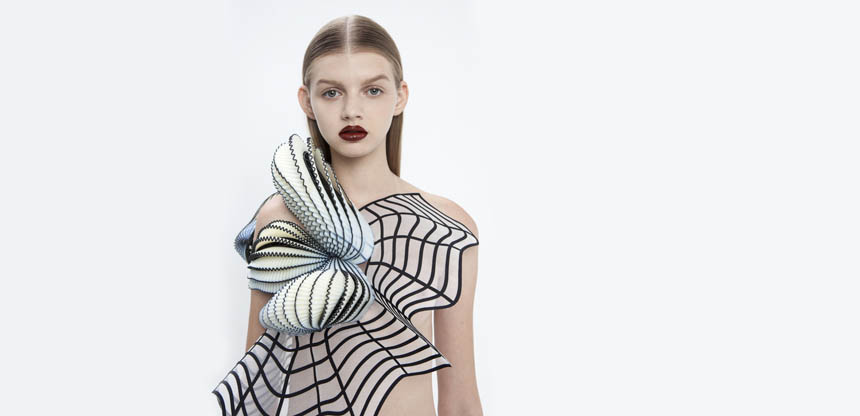 At this year’s Fashion Week in Paris, she also unveiled a 3D-printed haute couture dress that was developed in a collaboration between the designer and Belgian ice cream brand Magnum. The dress was made entirely from a vegan organic material based on cocoa bean shells. Iris van Herpen’s work is an intersection of fashion, design, technology, and science. In her designs, she brings together nature, fashion, and technology by using unconventional materials and technologies and combining them with traditional sewing techniques.
At this year’s Fashion Week in Paris, she also unveiled a 3D-printed haute couture dress that was developed in a collaboration between the designer and Belgian ice cream brand Magnum. The dress was made entirely from a vegan organic material based on cocoa bean shells. Iris van Herpen’s work is an intersection of fashion, design, technology, and science. In her designs, she brings together nature, fashion, and technology by using unconventional materials and technologies and combining them with traditional sewing techniques.
Galerie Dior
Additive manufacturing also found its way into the field of haute couture, as the example of the reproduced fashion pieces at Galerie Dior in Paris shows. On display at the Boutique Dior located in the world-famous Avenue Montaigne, interested visitors can find several hundreds of 3D-printed replicas of former Dior garments, handbags, or even shoes. The manufacturing process took place thanks to the collaboration between the ALIGHIERI agency and LA FERME 3D ©.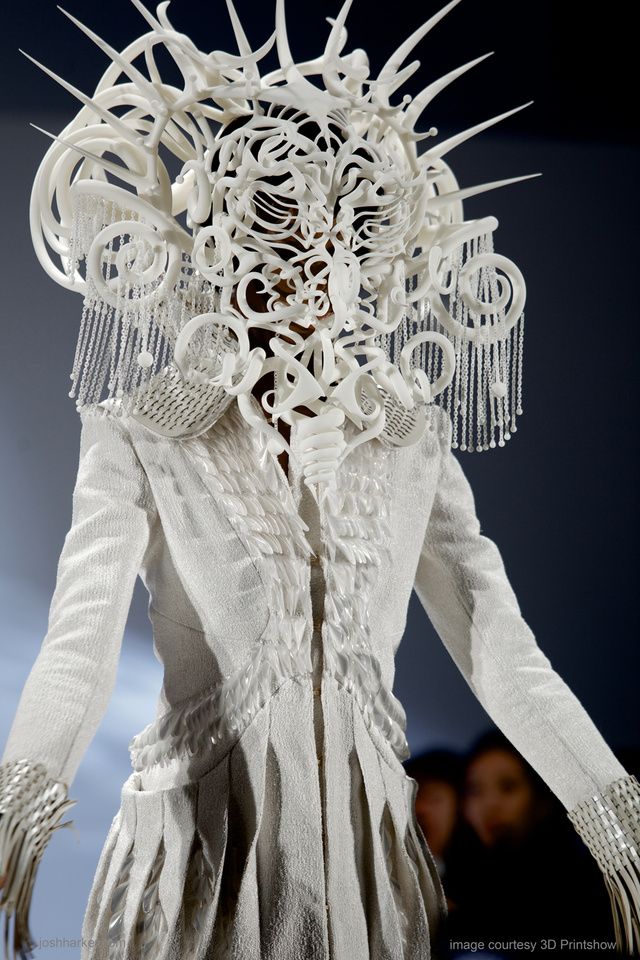 Together, they invested over 100,000 hours of printing and 10,000 hours of post-processing in the reproduction of the fashion elements. The printing was done by more than 30 3D printers, which were put to work for a total of six months, day and night, to complete the iconic Dior project. The material used for the production is entirely bio-based.
Together, they invested over 100,000 hours of printing and 10,000 hours of post-processing in the reproduction of the fashion elements. The printing was done by more than 30 3D printers, which were put to work for a total of six months, day and night, to complete the iconic Dior project. The material used for the production is entirely bio-based.
Kornit Digital and Its 3D Printed Knitwear
The high amount of society’s consumption of fast fashion was the turning point for Ronen Samuel, CEO of Kornit Digital, a sustainable fashion brand that uses additive manufacturing to produce knitwear. For its sustainable and waste-reducing fashion, Ronen uses direct-to-yarn printing, which is printing directly onto all types of textiles. In this case, the company uses MAX technology, which applies ink layer by layer. The result is a garment that looks like it was knitted traditionally. Ronen Samuel’s designs have already been presented at the Tel Aviv Fashion Show.
A 3D Printed Skeletal Mask for High Fashion
A great example of how 3D printing can be used to create a unique piece that can even give an outfit the missing touch which ultimately completes it is this skeletal mask created by designer Kevin Freitas Conlin.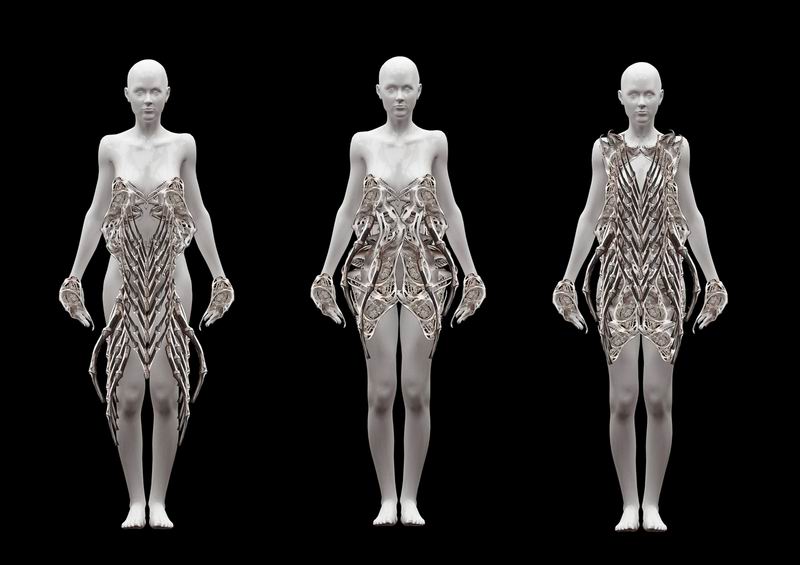 The exotic-looking accessory, that was worn by drag queen Aquaria on the tenth season of the popular show Ru Paul’s Drag Race, helped her win in the show’s final. The bone-like structure of the mask, which was customized to Aquaria’s face, was reportedly 3D-printed in laser-sintered nylon by American AM company Shapeways. This was the first time that 3D printing technologies were used on the show, and it inspired designers in later seasons of Ru Paul’s Drag Race to experiment with it as well and create other unique pieces, such as the fashionable exoskeleton worn by contestant A’whora during season 12.
The exotic-looking accessory, that was worn by drag queen Aquaria on the tenth season of the popular show Ru Paul’s Drag Race, helped her win in the show’s final. The bone-like structure of the mask, which was customized to Aquaria’s face, was reportedly 3D-printed in laser-sintered nylon by American AM company Shapeways. This was the first time that 3D printing technologies were used on the show, and it inspired designers in later seasons of Ru Paul’s Drag Race to experiment with it as well and create other unique pieces, such as the fashionable exoskeleton worn by contestant A’whora during season 12.
Julia Daviy’s 3D Printed Skirt
Julia Daviy started creating 3D printed fashion back in 2017 and has since released a variety of amazing 3D printed clothing collections. With a special focus on sustainability, the California-based fashion designer, who has quickly become a pioneer of sustainable 3D-printed fashion, designed and produced many examples of fashion, jewelry, and home décor.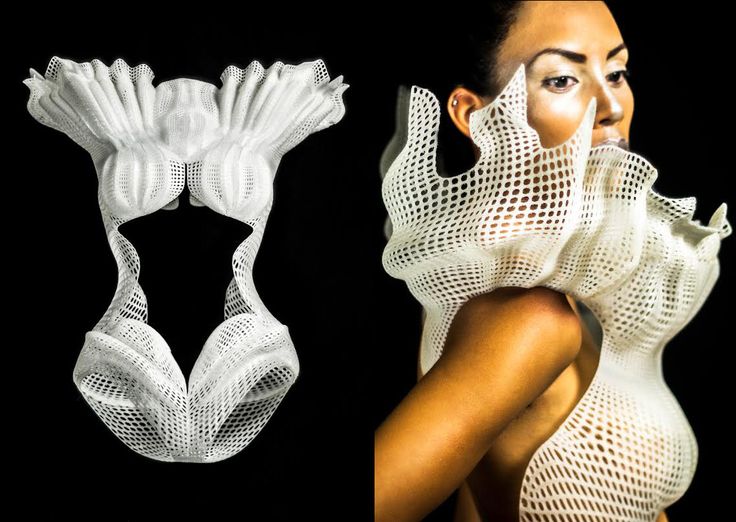 One interesting example of her work is The Organic Skirt. This particular piece is the central element of a 3D-printed collection that was released in 2019. In the project titled the After Forever Collection, all items of clothing were 3D-printed by using large-format 3D printers. The Organic Skirt was the first digital 3D-printed piece of clothing available on the U.S. market and is digitally customizable in over 1,000 variants.
One interesting example of her work is The Organic Skirt. This particular piece is the central element of a 3D-printed collection that was released in 2019. In the project titled the After Forever Collection, all items of clothing were 3D-printed by using large-format 3D printers. The Organic Skirt was the first digital 3D-printed piece of clothing available on the U.S. market and is digitally customizable in over 1,000 variants.
VIP TIE
VIP TIE is an Italian company that is famous for 3D printing ties. The goal of the company is to offer fashionable accessories that are as personalized as possible in order to satisfy the needs and desires of the customers. VIP TIE combines both luxury and innovative high-tech design. The creation process of just one tie can include an intricate mix of several complementary procedures and materials: craftsmanship, embroidery, 3D printing, exotic leather, mother-of-pearl, carbon fiber, silver, gold, and silver plated solid. Apart from highly customizable products, another advantage of VIP TIE is that more than 80% of the materials used are 100% environmentally friendly.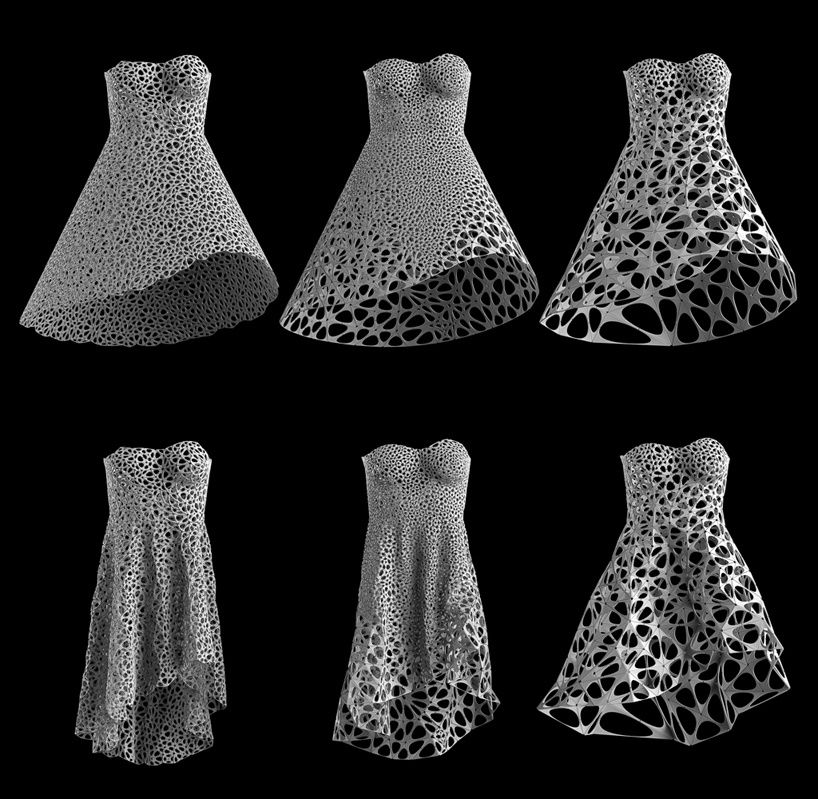
Patronace
Patronace is a sports brand created by award-winning designer Bastian Müller. The Munich-based brand offers 3D printed activewear for those who lead a fast-paced lifestyle. The clothes are made for everyday urban mobility, no matter if you commute by skateboard, scooter, or e-bike. For the production of the clothes, the brand uses a lightweight and flexible textile printing technology called GRDXKN, which transforms substrates into smart textiles. This unique material, with which Patronace manufactures these garments includes integrated protection and insulation, and has a special kind of grip thanks to the textile layer that controls moisture, is breathable, water repellent, abrasion resistant, and shock absorbing. The fashion created by the company with its intelligent textile allows you to feel both, safe and stylish at the same time.
3D Printed Leather Which Could Revolutionize the Fashion Industry
When it comes to materials in fashion, one that will never go out of style is leather.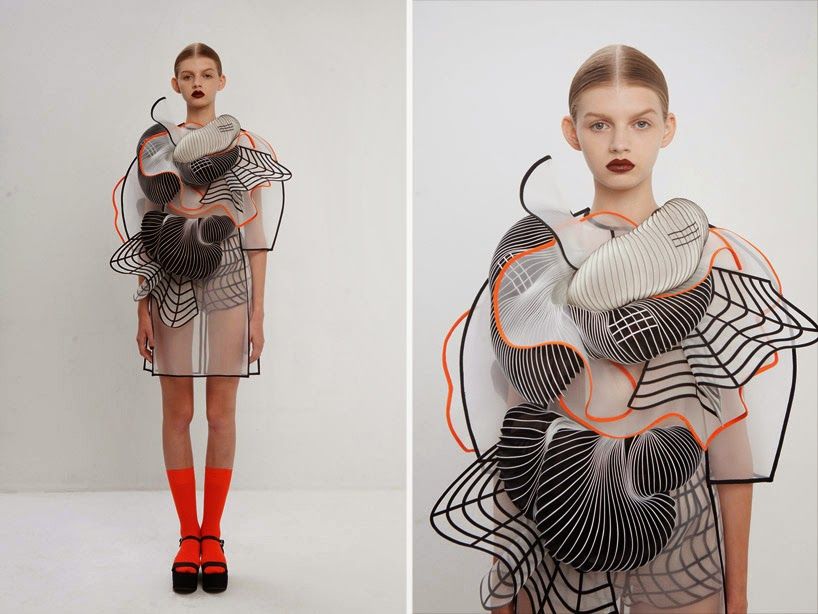 For jackets, boots and everything in-between, leather is a cornerstone in the industry. However, ethical use of the material can be difficult. Real leather is often touted as far superior to its alternatives, but many still would prefer leather to be animal free. Thankfully, researchers from Tufts University might have a solution. Using silk cocoons from the silkworm Bobmyx mori and 3D printing on a custom-built pneumatic extrusion 3D printer, the researchers were able to produce an environmentally friendly, animal-free leather alternative that not only resembles real leather but also has the same mechanical properties. Though as of now they have only made a wallet out of the material, the find could have a major impact on the fashion industry at large in the near future.
For jackets, boots and everything in-between, leather is a cornerstone in the industry. However, ethical use of the material can be difficult. Real leather is often touted as far superior to its alternatives, but many still would prefer leather to be animal free. Thankfully, researchers from Tufts University might have a solution. Using silk cocoons from the silkworm Bobmyx mori and 3D printing on a custom-built pneumatic extrusion 3D printer, the researchers were able to produce an environmentally friendly, animal-free leather alternative that not only resembles real leather but also has the same mechanical properties. Though as of now they have only made a wallet out of the material, the find could have a major impact on the fashion industry at large in the near future.
Stratasys and The SSYS 2Y22 Reflection Collection
Recently, well-known manufacturer Stratasys introduced its new commitment to the 3D printed fashion world with the launch of its J850 TechStyle 3D printer.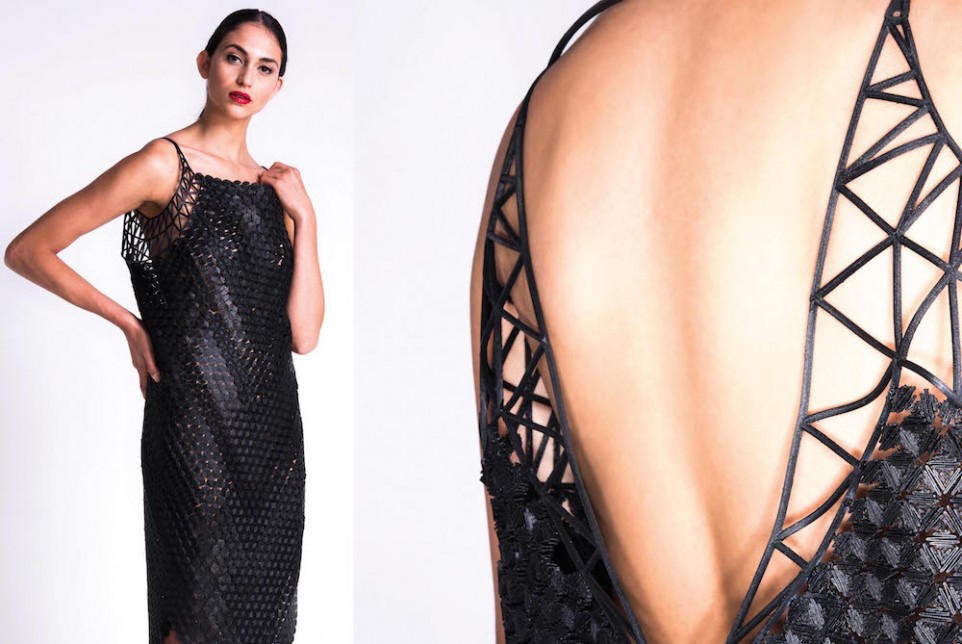 Following that, the American-Israeli company has continued to demonstrate the capabilities of additive manufacturing in this field. During Milan Design Fashion Week, it unveiled its SSYS 2Y22 Reflection collection, consisting of high-end accessories and apparel, which were all 3D printed. This was possible thanks to the collaboration with 7 other groups of designers that, together with the technology of its J850 TechStyle solution, allowed the development of an innovative line of products that aim to reflect the social impact observed in recent years. In the video below you can see the use of 3D printing to create these fashion garments, specifically from the hand of Ganit Goldstein, one of the designers who participated in the SSYS 2Y22 Reflection:
Following that, the American-Israeli company has continued to demonstrate the capabilities of additive manufacturing in this field. During Milan Design Fashion Week, it unveiled its SSYS 2Y22 Reflection collection, consisting of high-end accessories and apparel, which were all 3D printed. This was possible thanks to the collaboration with 7 other groups of designers that, together with the technology of its J850 TechStyle solution, allowed the development of an innovative line of products that aim to reflect the social impact observed in recent years. In the video below you can see the use of 3D printing to create these fashion garments, specifically from the hand of Ganit Goldstein, one of the designers who participated in the SSYS 2Y22 Reflection:
What do you think of this 3D printed fashion? Let us know in a comment below or on our LinkedIn, Facebook, and Twitter pages! Don’t forget to sign up for our free weekly Newsletter here, the latest 3D printing news straight to your inbox! You can also find all our videos on our YouTube channel.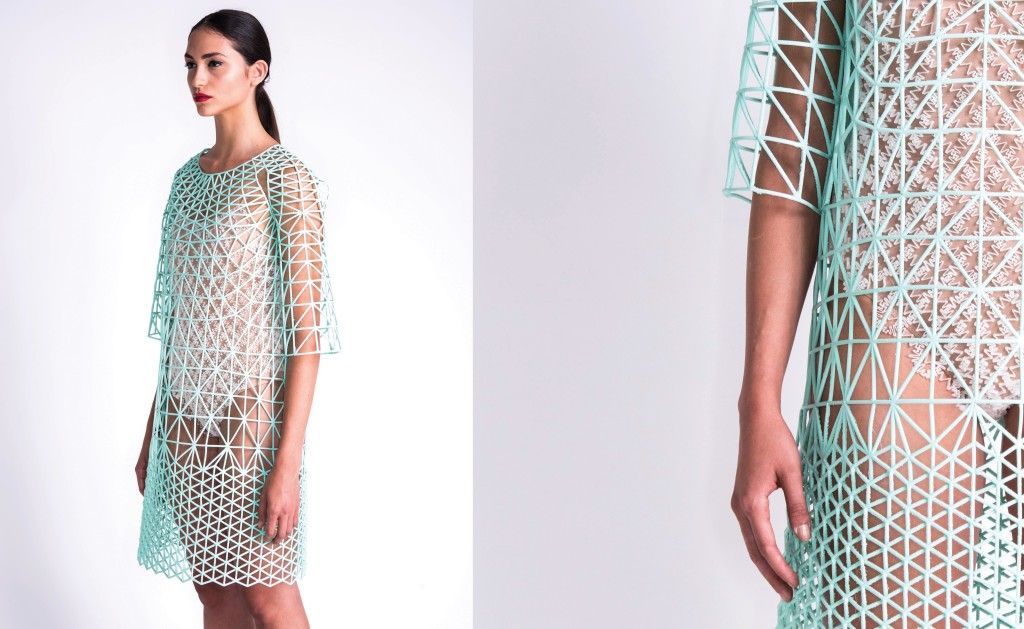
Must Know 3D Printed Clothing Designers in 2021 - HYBRID RITUALS
With companies like Voxel8, 3D printing technologies are penetrating the fashion industry, particularly in haute couture. Additive manufacturing offers innovative new techniques for 3D printed clothing that not only give designers a cutting edge tool for expressing their creativity but also allows them to connect with a fashion-forward audience.
If you are a fashion tech designer looking to get inspired, here are the top 3D printed clothing designers who are famous in the industry.
The mother of high-tech couture — Iris Van Herpen
Source / Iris Van Herpen
With her Spring 2021 Couture, Iris Van Herpen continue to impress us with her new dialogue between fashion, nature and technology. This collection, she partnered with Parley, Adida’s recycled shoes manufacturing partner, and used upcycled marine debris to inject her designs with a unique yet sustainable spin.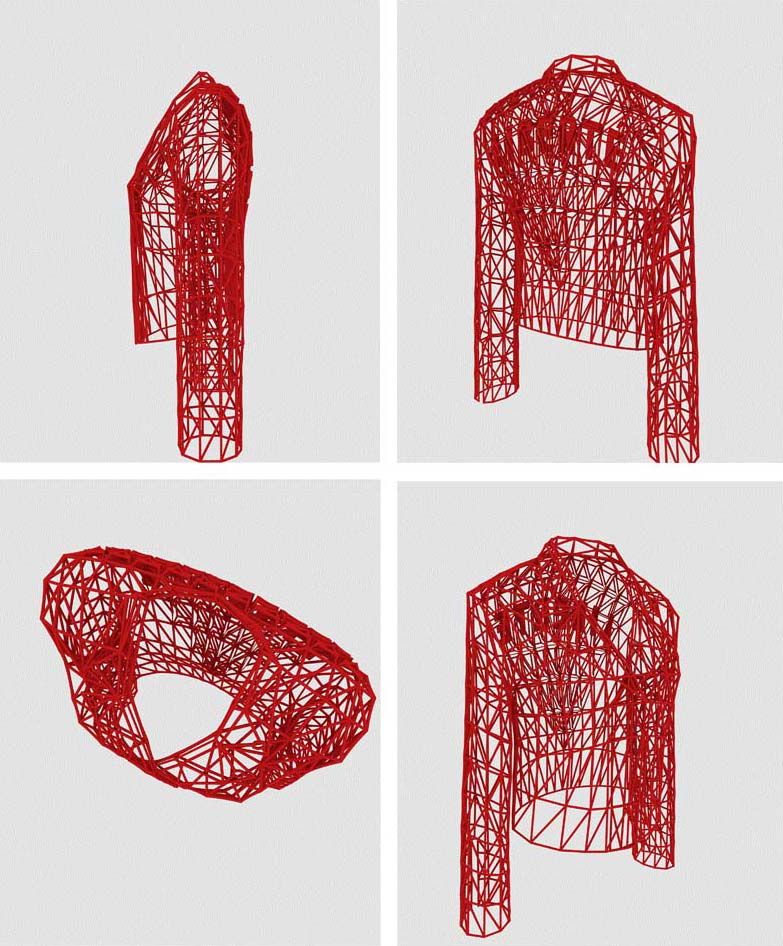
Iris Van Herpen is known for her crazy structural wearables infused with technologies. She has worked with MIT Media Lab professor Neri Oxman in 2013 to create armours that acts like second skin. “The ability to vary softness and elasticity inspired us to design a “second skin” for the body acting as armor-in-motion; in this way we were able to design not only the garment’s form but also its motion,” explains Oxman. “The incredible possibilities afforded by these new technologies allowed us to reinterpret the tradition of couture as “tech-couture” where delicate hand-made embroidery and needlework is replaced by code….”
Practice covid 19 precautions with The Proximity Dress
Source / Anouk Wipprecht
Designed by Anouk Wipprecht, a Dutch fashion designer, the Proximity Dress combines elements of tech and fashion to create sensors that can detect movement near the wearer’s body. If someone gets too close to the wearer, the dress expands forming a barrier between the wearer and the external stimuli.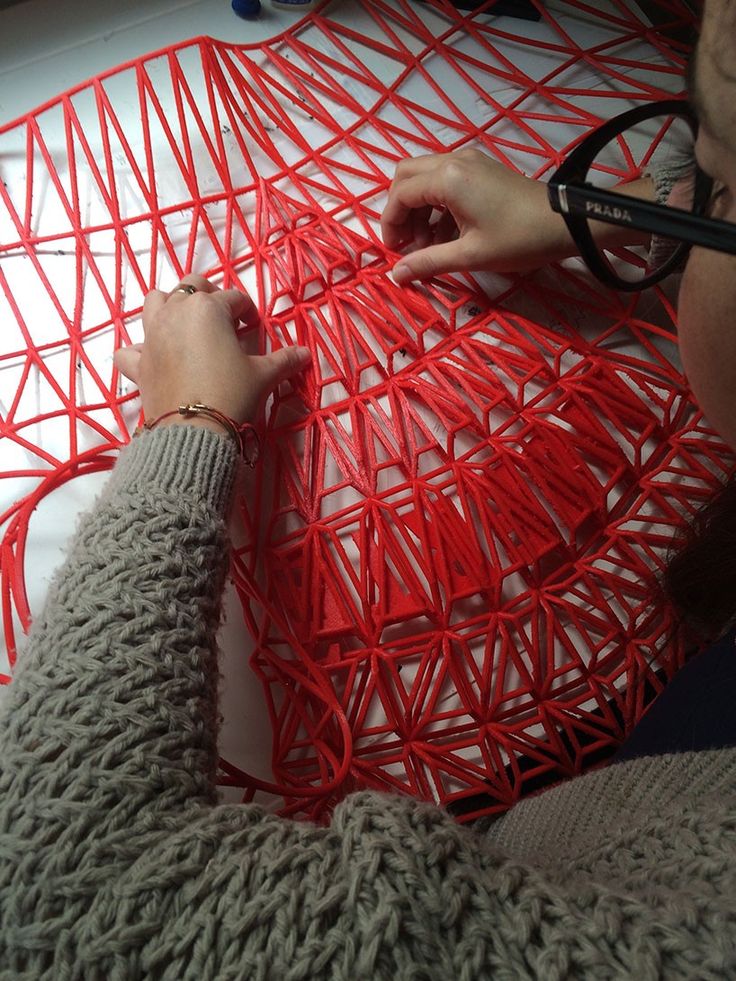 The dress was designed using Stratasys PolyJet technology and the SLS process.
The dress was designed using Stratasys PolyJet technology and the SLS process.
Opt for sustainable fashion with a zero-waste 3D printed clothing
Source / Julia Daviy
This 3D printed dress is designed by fashion tech designer Julia Daviy. She sees 3D printing as a viable solution to move away from conventional fashion production to an environmentally-friendly design and development. Designed using recyclable filaments, the skirt produces less than 1% waste, which makes it highly sustainable in a time where sustainability is much needed.
Print your own 3D dress with Danit Peleg designs
Source / Danit Peleg
Danit Peleg loves to create 3D printed garments to make this fashion tech trend accessible to everyone. Peleg wants to make sure that anyone can shop for her digital fashion designs, experience how the designs look through augmented reality, download the design file on NFTs, and print their own dress on any 3D printer.
Sustainable 3D printed collection by Zerera Studio
Source / Zerera Studio
Using biodegradable filaments and garments, the ZRE collection design studio creates sustainable 3D printed fashion that offers both stylish and eco-friendly choices for fashion enthusiasts. The studio is experimenting with other technologies including a body scanner and a laser cutting machine to create unique fashion articles that do more than just save the planet.
Get inspired by Julia Koerner’s collection
Source / Black Panther
If you have seen Black Panther then you are familiar with this fashion tech designer on our list. Julia Koerner created stunning costumes for the film in collaboration with Ruth E Carter harnessing the power of 3D printing to produce fine garment structures.
Accessory: 3D handbags with XYZ BAG
Source / XYZ Bag
Next on our list is a CAD modeled handbag collection that is customized based on the user’s preferences.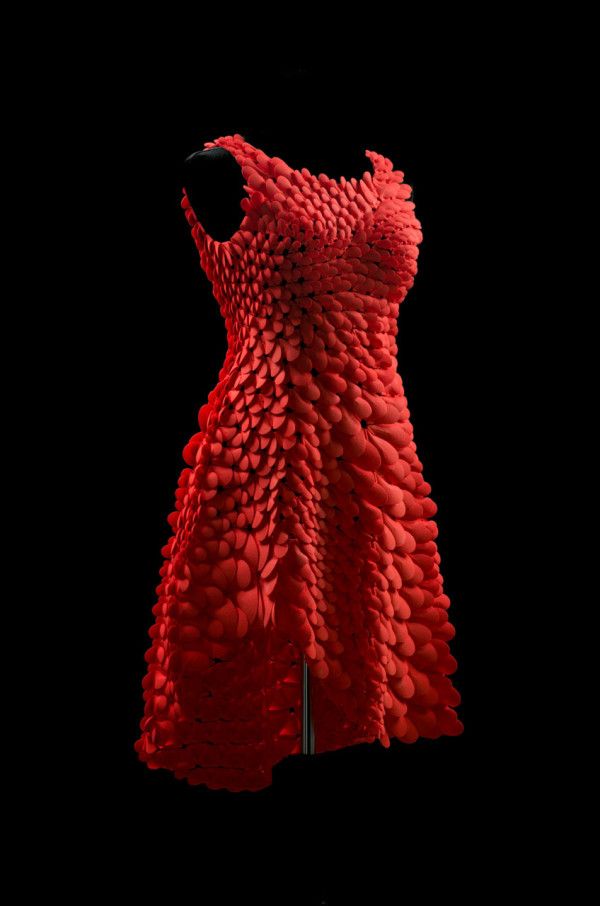 Based in Italy, the company allows its customers to choose a design from 3 different product options and place the order.
Based in Italy, the company allows its customers to choose a design from 3 different product options and place the order.
The company then uses CAD technology to print the handbag. Originally, the company’s handbags were offered in a standard black color, but customers can also choose a different color which will then be hand-painted to give a seamless design. According to the company’s CEO Annalisa Nicola, the 3D designs allow for greater freedom in terms of creativity.
If you’re looking for the latest emerging designers that we have our eyes on, click here.
Modellers using 3D printing: part 1
In recent years, the fashion industry has shown great interest in 3D printing. With the declining cost of 3D printers and the impact of additive technology on the manufacturing industry, fashion designers are now using 3D printed designs as another creative tool.
Engineers collaborate with fashion designers to create high-end fashion wardrobes.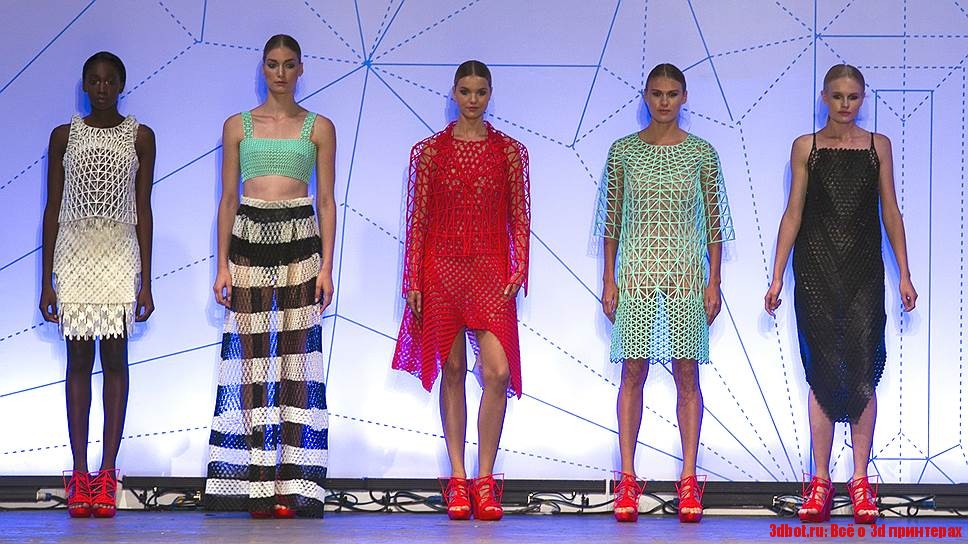 It is clear that the role of 3D printing in fashion is constantly growing, providing the couturier with a canvas for creative expression. And now it's time to get acquainted with real examples of the use of 3D printing in the field of fashion creation.
It is clear that the role of 3D printing in fashion is constantly growing, providing the couturier with a canvas for creative expression. And now it's time to get acquainted with real examples of the use of 3D printing in the field of fashion creation.
Julia Davey
The designer's interest in smart clothes began in 2009. This then led to the development of a line of "organic" outfits in 2015. As an environmentalist and cleantech industry manager, she realized that traditional production is labor intensive and environmentally irresponsible. To find a solution, Davy plunged into the possibilities of 3D printing.
After completing 3D printing specialization courses at the University of Illinois at Urbana-Champaign, as well as other 3D modeling and 3D printing courses, she bought her first 3D printer. As a designer and 3D printer operator, Davy created the first line of 3D printed clothing. Her work includes 3D printed dresses and tops that are environmentally friendly as they don't need to be mass-produced and stocked.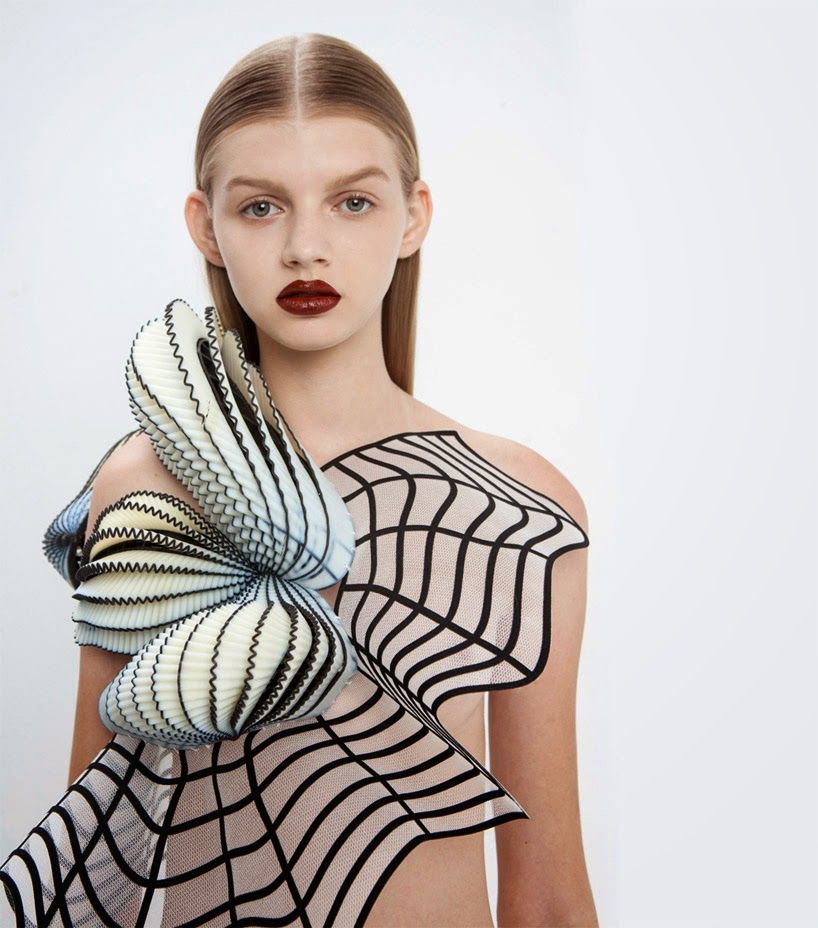
Davy loves to create her own meshes and fabrics, which has led her to experiment a lot. She is sure that 3D printing is very useful for the fashion industry, because the resulting clothes are biodegradable, cheap and resistant to mechanical damage.
Silvia Fado
Together with Hexxon (a group of 3D printing engineers), Silvia developed a prototype carbon fiber shoe. This material gives the shoe a special strength and lightness.
Fado has a strong interest in architecture and has a background in knitwear design and is focused on new technologies. After studying traditional shoe-making techniques, she earned a master's degree in this specialization from the London College of Fashion. Fado's work focuses on the study of the functionality of flamboyant shoes; seeking synergy between comfort and aesthetics. Sylvia's latest shoe line is called CARBONALISE.
Source
Tags:
Julia Davy - fashion designer, 3D printing, Silvia Fado - fashion designer, Hexxon, carbon fiber shoe prototype, 3D modeling and 3D printing courses, 3D printer, 3D printed clothing line
Other materials:
- From parkour to surgery: ten latest advances in robotics
- When will a 3D scanner appear on your phone?
- ANSYS 2019 R1: Computing in Innovative Industries and Improving Classical Applications
- How a 10-year-old schoolboy learned to make money on his hobby - 3D printing
- Additive technologies in medicine: a review of recent achievements
Attention!
We accept news, articles or press releases
with links and images.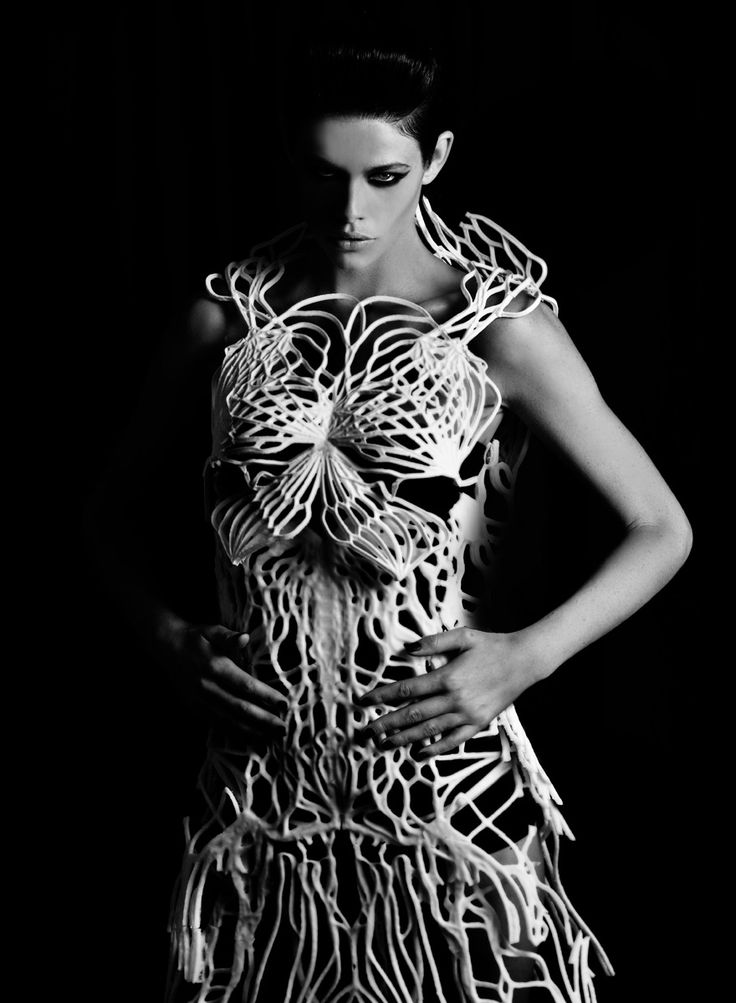 [email protected]
[email protected]
Would you wear a dress made from a 3D printer?
The annual Fashion and Textile Days in Zurich: models showcasing clothes created by designer Danit Peleg await their runway. WongwannawatRecently, at the annual Fashion and Textile Days in Zurich, a presentation of 3D-printed clothing models took place. When 3D printing can really compete with weaving machines, and whether it can at all, this question remains open.
This content was published on April 25, 2017 - 11:00 AMSusan Misika (Suzanne Misika), Zurich
Israeli fashion designer Danit PelegExternal link creates her designs without the usual fabrics and sewing machines, while being the most popular participant in the annual Fashion and Textile Days.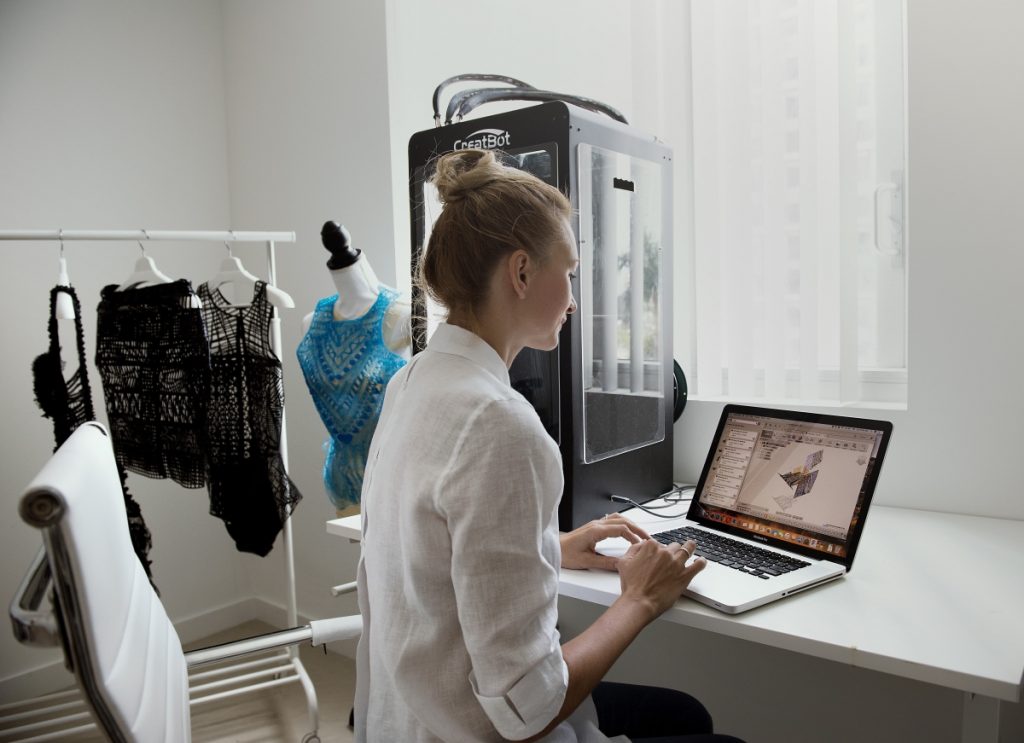 Clothing items have been printed on 3D printers before, but it was she who became the first fashion designer to create an entire collection in this way. Danit Peleg's goal is to enable its customers in the future to receive sketch files by e-mail, using which they themselves will then be able to print their own clothes where and when they want.
Clothing items have been printed on 3D printers before, but it was she who became the first fashion designer to create an entire collection in this way. Danit Peleg's goal is to enable its customers in the future to receive sketch files by e-mail, using which they themselves will then be able to print their own clothes where and when they want.
Unfortunately, while most people do not have easy access to cheap and high-quality 3D printers, therefore, at this stage, she plans to design and produce outerwear in small batches on order. These clothes will be made exactly according to individual measurements, in addition, customers will be able to choose the color of this model, as well as the style of the lining, the role of which cannot be overestimated, because without it people will simply freeze, and such clothes will sometimes look too frank and defiant.
Swiss textiles
Switzerland was once famous for its textile industry. It was in this industry that the process of its rapid industrialization began in the 18th century.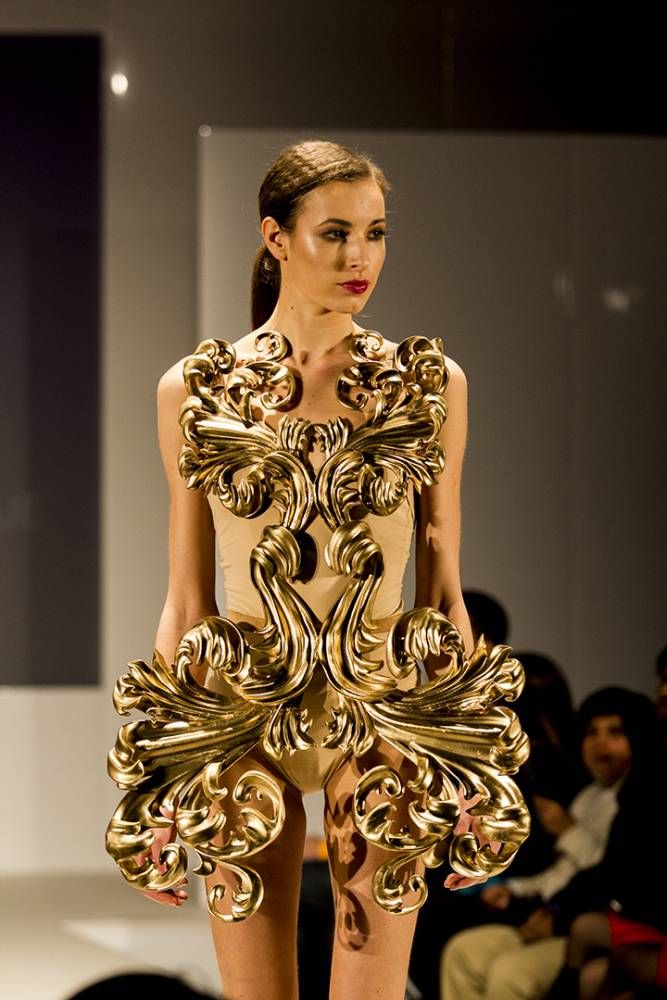 Fine lace, fine linen, skillful embroidery - all these Swiss textile products once glorified the country throughout Europe. The largest center of weaving and weaving machinery was the city of St. Gallen in the Confederation. In the second half of the 19th century, however, the Swiss textile industry fell into a serious crisis.
Fine lace, fine linen, skillful embroidery - all these Swiss textile products once glorified the country throughout Europe. The largest center of weaving and weaving machinery was the city of St. Gallen in the Confederation. In the second half of the 19th century, however, the Swiss textile industry fell into a serious crisis.
Show more
The profitability of production has fallen sharply, but the machine and machine tool traditions have managed to survive all the troubles, including wars, and today, in the era of the transition of the world economy to new innovative tracks, Switzerland is still a global leader, being a country convenient and comfortable for everything new and unusual, which, perhaps, will determine the face of European fashion in the future.
It is no coincidence that the exclusive textile manufacturers Jakob Schläpfer and Forster Rohner are now based in St. Gallen, and that the “Swiss College of Fashion, Design and Business” is located in Zurich, which is famous for its mechanical engineering.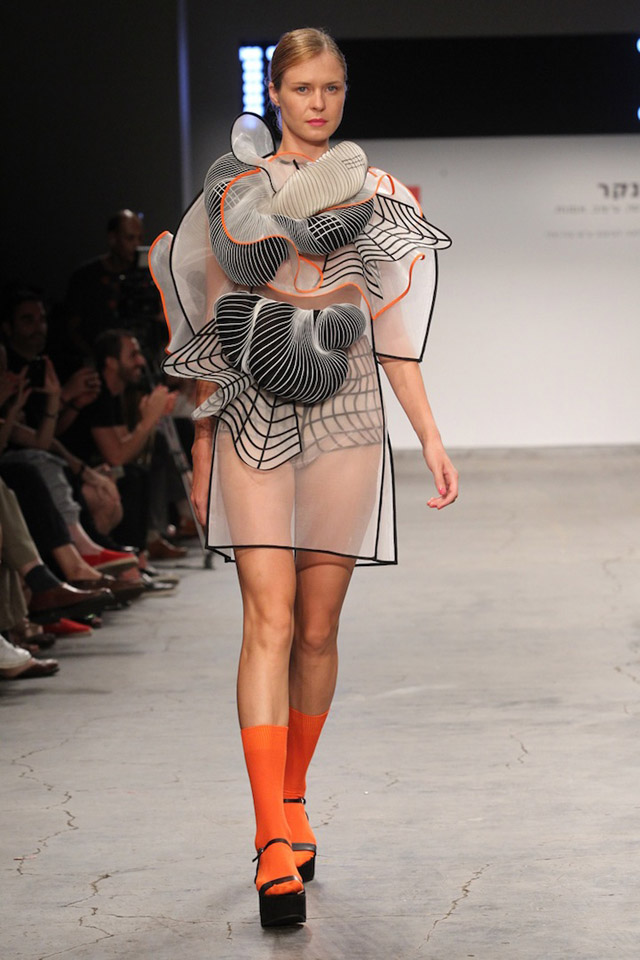 administration" (" Höhere Fachschule für Fashion, Textiles und Business ManagementExternal link ”), which now has about 700 students. It is this combination of business, university science, venture capital and a comfortable innovative environment that helps maintain the long-standing Swiss fashion tradition. Volumetric printing using 3D printers is considered here as a very promising technology.
administration" (" Höhere Fachschule für Fashion, Textiles und Business ManagementExternal link ”), which now has about 700 students. It is this combination of business, university science, venture capital and a comfortable innovative environment that helps maintain the long-standing Swiss fashion tradition. Volumetric printing using 3D printers is considered here as a very promising technology.
Clothes from the printer
Danit Peleg makes his models using plastic fiber instead of the usual thread. During the years of study at the Israel College of Technology, Design and Arts ShenkarExternal link she spent a lot of time looking for the most comfortable and durable material and the most efficient printer model. At the same time, she received support from a number of Tel Aviv start-up companies and innovation laboratories.
Show more
For Peleg, the main advantages of clothes created on a 3D printer are individuality of style, flexibility of the production process and environmental safety.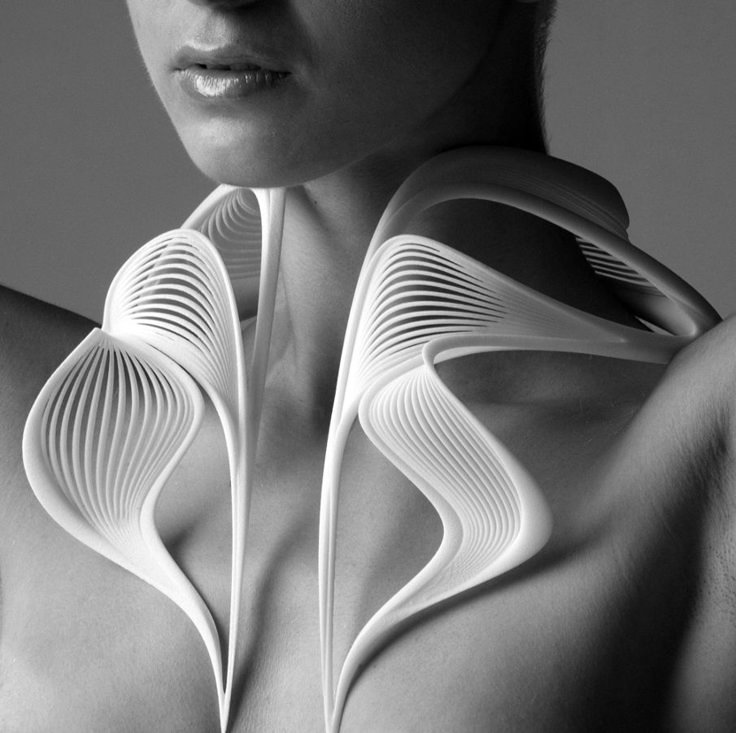 “It’s a truly zero-waste production—there are no scraps or unclaimed clothes in stores,” she says, adding that if you get bored with any piece of clothing, you can simply melt it down and make a new one from the resulting material.
“It’s a truly zero-waste production—there are no scraps or unclaimed clothes in stores,” she says, adding that if you get bored with any piece of clothing, you can simply melt it down and make a new one from the resulting material.
The problem is time!
As you might expect, the association " CEMATEXExternal link ", which brings together European manufacturers of textile machinery and equipment from Belgium, Great Britain, Germany, Spain, Italy, the Netherlands, France, Switzerland and Sweden, is very skeptical about the prospects for replacing 3D looms - printers. “Nevertheless, it must be admitted that this is an interesting trend and a very curious technology,” said Ernesto Maurer, director of the Textile Machinery Division of the cross-industry Swiss engineering organization Swissmem and vice president of CEMATEX.
Whether 3D printing will prove to be a real threat in the near or far future for the traditional textile industry, which has about 40 companies in Switzerland alone, only time will tell.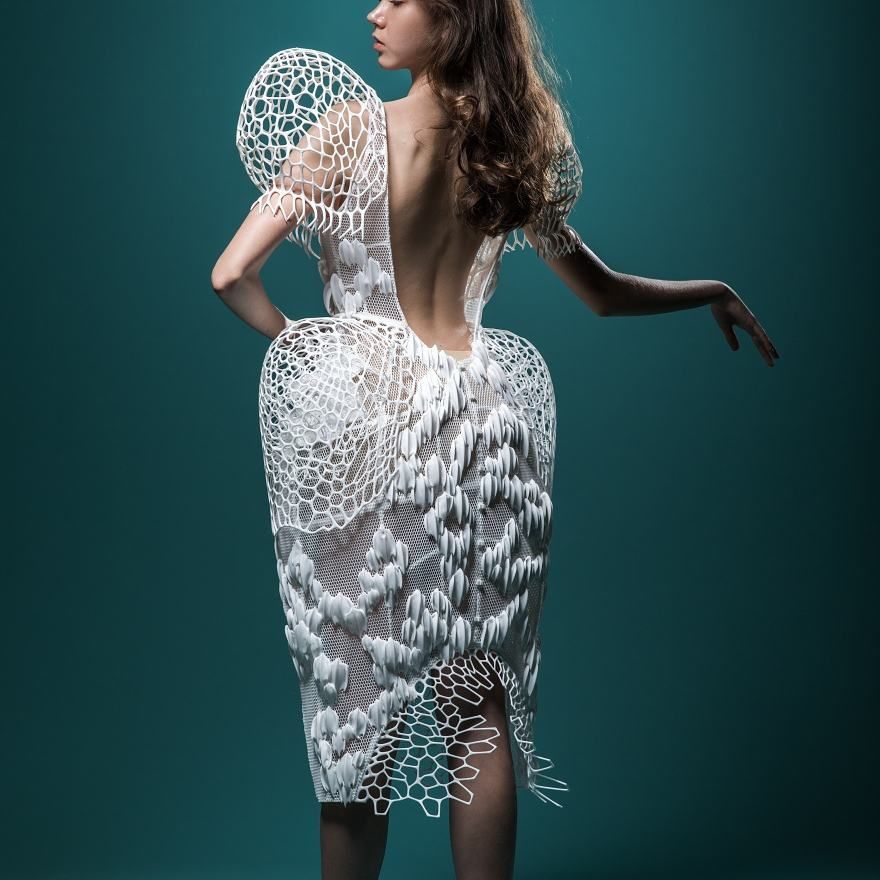 As D. Peleg says, the cost of equipment and consumables has already approached a quite acceptable level: a spool of special fiber now costs about $30, and a more or less normal and 3D printer can already be purchased for $2,000.
As D. Peleg says, the cost of equipment and consumables has already approached a quite acceptable level: a spool of special fiber now costs about $30, and a more or less normal and 3D printer can already be purchased for $2,000.
Therefore, time remains the most significant problem. Now it takes about 100 hours to "print" a traditional dress - not bad at all, but only if you consider that just a year ago this operation took three times as long. A conventional loom is capable of producing the material needed for one dress in about 8 minutes.
Looks great, but not very practical
Another downside is that the 3D printed clothing - mostly made of polyethylene - is too stiff and inelastic. D. Peleg admits that traditional cotton and silk are much better suited for creating clothing models. But tastes change, and technologies improve. E. Maurer says that 30 years ago, almost all clothing was made from natural materials. “The only exception was nylon tights. Nobody wanted to wear synthetic clothes, but what about today?
Show more
Elian Diethelm, co-founder of Little Black DressExternal link from Zurich, agrees.